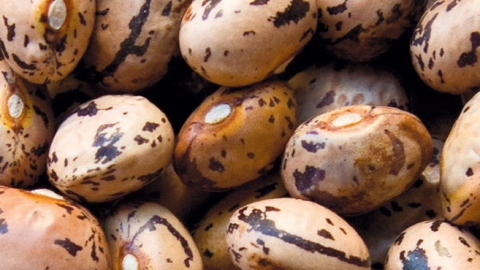Iacopi Farms: A Love Affair with Legumes
When Mike Iacopi tucks into a bowl of his hearty Italian butter bean chili, he’s eating the food of his Italian ancestors. The plump, meaty beans in this old family recipe are among three heirloom varieties that descend from those brought over from the Tuscan town of Lucca by his grandfather Michele, a farmer who immigrated to Pescadero in 1939.
Mike, 45, is the third-generation Iacopi to farm on the San Mateo coast and works side by side with this father, Louis, 74, on about 150 leased acres just north and south of Half Moon Bay. Louis, with an impressively sturdy frame and suntanned legs—“the only farmer who works in shorts”—reminisces about “the early days when we were out there with a horse pulling a harrow” on the fog-shrouded land near the Pigeon Point lighthouse, 20 miles south of where they farm today.
“When my dad came over he was one of those guys who loved to plant,” says Louis, “but he ended up being a cook at the ranch.” Back then, anyone who worked on a farm lived on the farm, so Michele cooked an elaborate spread every day for the entire crew.
“Everything was about food because Italians love food,” Louis remembers fondly, “and he was a super great cook.”
Louis took an early interest in farming, intrigued by watching the horses plow the fields and then thrilled at the arrival of the first tractor. In 1962, he was recruited by some friends to farm 200 acres in Half Moon Bay.
Over the ensuing decades, as the Coastside became more densely populated and tourism increased, the Iacopis’ lush fields have helped the Coastside retain its character as a farming community. Mike has stepped into the administrative role, but both he and Louis are out in the field daily. Their crops can be seen just south of Half Moon Bay off of Highway 1, north of town along the highway in Princeton by the Sea, and—surely causing double-takes among passing drivers—between the landing strips at the diminutive Half Moon Bay Airport.
While the pride and joy of their crops are the family’s heirloom Italian butter, borlotti and Manchurian beans, they produce several other dried and shelling beans, including cranberry (which become borlotti when dried) and favas, as well as their famed artichokes and peas, green beans, Swiss chard, broccoli, cauliflower and kale.
Most dry beans in California are grown in the heat of inland valleys, where water is at a premium, especially in drought years. But since the beginning, the Iacopis have practiced the age-old technique of dry farming on much of their cropland, depending only on rainfall for moisture. After the first autumn rains, they till with a “ring roller” that gently loosens the soil and leaves a pattern of tiny humps, saving moisture below the surface even during hot spells. This attunement to the soil allows them to extend their planting season from fall to as late as May.
Mike acknowledges it’s risky growing a crop that eventually needs to dry out in a foggy climate like Half Moon Bay’s, but the advantage is that the beans grow slowly over a longer period and develop intense flavor. “We plant when the weather tells us,” he says. “The early plantings are shallow so they won’t stay too wet in the rains, and later in the season we plant deeper so they’re closer to the moisture. The lower roots go deep looking for water, and the upper roots are christened by the fog.”
Some of their fields do have water from ponds that fill from rainwater and runoff. But they only get irrigated a few times a year, and in this year’s drought it was just once or twice.
Over the past 20 years the Iacopis have developed a following among shoppers at farmers markets throughout the Bay Area, and more recently among celebrated chefs from Napa in the north to Big Sur in the south.
“You know, kale years ago wasn’t a big popular thing,” says Louis, “but now it’s a hot item because these young chefs have a lot of enthusiasm wanting to bring back the old flavors and the old foods.”
The Italian butter beans remain the favorite of both father and son. “I stew them, I boil them, I put them in salads,” says Louis. “They make the best chili beans,” adds Mike, “because you’ve got something big and meaty to eat instead of little beans that fall apart.”
Their go-to recipe that can stand alone or complement any main dish? Simply combine cooked beans with chopped red onion, olive oil and a little salt and pepper. Pour a glass of vino toscano, rent a Fellini flick and have a fine Italian evening.
Beans photos courtesy of Iacopi


